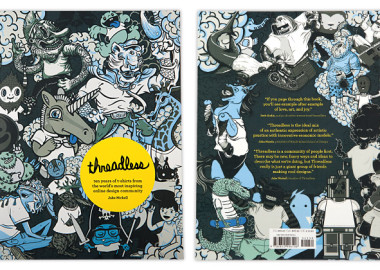At ECHO Storytelling Agency, we advocate sharing authentic narratives. But this is not the only way we understand “brand storytelling.” Equally important is indirectly telling your story by showing interests and displaying knowledge. For most businesses, this can be accomplished nicely with content marketing – or the sharing of generally free content of many kinds designed to appeal to your ideal customers.
And we get it. The content approach can be downright scary, yet the potential rewards are immense. After all, as consumers, we all want web content that enlightens and entertains, distracts and disarms, or is otherwise useful. If a company can offer us that, we’ll love them for it and even share that content with friends.
Examples of Content Mastery
The Red Bulletin, Red Bull’s print-and-digital magazine is the most obvious example of a brand that has mastered content. The custom magazine covers extreme sports and edgy tastes, mainly for younger men. But it never directly discusses energy drinks. Guess what else? It’s a bonafide worldwide hit. If that seems like a lot of pressure, don’t worry. Red Bull is widely regarded as the world’s best, or at least most extreme, content marketer.
For a more chill example, consider The Chalkboard Mag (TCM), a recent TOM on P’n’R [content geeks get it, others can start here]. It’s a hip wellness website owned and operated by Pressed Juicery, a chic juice start-up in California. The TCM site is not about juice but is beloved by its progressive, health-conscious readers. This provides Pressed Juicery with valuable data and a chance to connect with potential future customers.
Think Like A Magazine
In both examples, these beverage brands achieve content success by thinking like magazines. Now, we hear you. You’re saying, “That’s all well and good. But I don’t own a publishing company. That’s simply not my business. Me? I sell sprockets/massages/legal services/bicycles, etc.”
Well, once again, you don’t need to be a magazine to benefit from acting like one. It also doesn’t matter how big or small your company is. Even having a separate website for your content marketing isn’t necessary. A standard blog page will do fine. The key is simply emulating some of the best practices that have made the glossy magazine an enduring symbol of leisure.
It’s all about approach and mentality. It’s a chance to channel your inner Anna Wintour, to become a self-styled Jann Wenner.
Here’s How In 5 Easy Steps
#1: Identify An Audience
There’s a saying in content marketing that if you make something for everyone, it ends up being for no one. Magazines learned this long ago. That’s why there are options at the newsstand for every age, taste, and interest. You might feel awkward ignoring potential customers. Don’t. You’ll have more success by first identifying your ideal customers and determining what they like or need (marketers call this activity creating personas), and then targeting that audience with amazing content on that topic.
#2: Be Consistent
There are reasons that magazine issues come out at set intervals. For one, it lets your audience know what to expect and when. But “regular” doesn’t only mean “frequent.” Some magazines are weekly, others are monthly, quarterly, or even annuals. Your content marketing should be the same. Pick a frequency you can publish at comfortably. Then do it and stick to it. No matter what.
#3: Prioritize Layout
The best magazines are not only fun to read, they’re interesting to look at. It’s a combination of column and paragraph variation, images, fonts, colours, and more that keeps the pages turning. Or, if every page is laid out roughly the same way, that design had better be impeccable. Your content marketing can’t be any less a visual treat. So experiment with it. Have fun. Just make don’t use images you don’t have rights to. Above all, make something exciting.
#4: Build A Team
Virtually no magazine is published by just one person. Generally, success comes from creating varied content that approaches a single topic from multiple perspectives. The results then shine with the light of many talents. In short, you need a team. This doesn’t have to mean hiring full-time staff. In today’s thriving gig economy, freelancers or agencies exist for everything from web design to writing to videography. And they are easy to find. Often, their services are more affordable than you think.
#5: Cultivate A Voice
Above all, a magazine or content channel must have a unique voice. That’s much different from a topic, which can always be duplicated. Rather, your voice is a personality that’s all your own. To achieve it, there should be a house style and even certain shared core beliefs reflected in every piece of content. Maintaining that voice is the job of the editor-in-chief. Unless your company is very large, there’s a good chance that person is you. Another time-honoured trick of magazines is building brands within brands. These are trusted columns or recurring features that readers return to again and again. If your analytics show you’ve hit on something like that, keep on doing it.
Conclusion
There is plenty more that content marketers can learn from magazines. But mainly it’s that audiences read magazines only because they want to. That’s their defining feature. They are designed with pleasure and enjoyment in mind. All content marketing should be the same.
To be clear, that doesn’t mean all content marketing needs to be article-style. It can contain narrative, like Royal Carribean’s millennial-targeted dramatic web series, Royal Crush. Or it can consist of web videos designed to inspire and engage, as with Starbucks’ Upstanders.
It can be anything at all your readers will enjoy. Unless it’s a custom brand magazine. Then it might really be a magazine. Content marketing is funny like that.
For more help understanding content marketing and how it can be used to generate business for your company, stick with us online, subscribe to our storytelling newsletter, take our storytelling e-course, or follow us on social media.
And if we can help you achieve any of these goals more directly, drop us a line.






